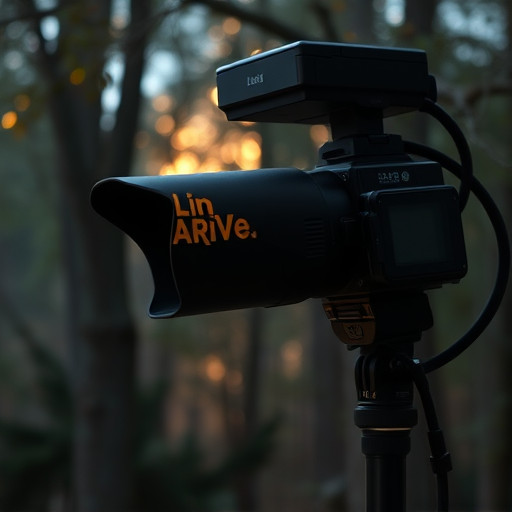Fake Security Camera Mounting Brackets (decoy brackets) are strategic tools that mimic real camera hardware, deterring intruders from tampering with actual surveillance equipment. Discreetly placed in visible areas, these brackets house hidden cameras or microphones while maintaining privacy around covert recording systems. Their use blends discreteness and functionality, but deployment must adhere to legal and ethical constraints, as unauthorized surveillance can breach individual privacy and privacy laws.
In today’s world, covert recording equipment plays a crucial role in various industries for security and evidence collection. However, the use of fake security camera mounting brackets has emerged as a subtle yet effective method for unauthorized surveillance. This article explores strategies for discreet placement of recording devices, techniques to detect disguised surveillance equipment, and the legal and ethical boundaries surrounding their use. Understanding how to navigate these issues is essential in maintaining privacy and data security.
- Understanding Fake Security Camera Mounting Brackets
- Strategies for Covert Recording Equipment Placement
- Detecting Disguised Surveillance Devices
- Legal and Ethical Considerations in Using Covert Recording Equipment
Understanding Fake Security Camera Mounting Brackets
Fake Security Camera Mounting Brackets, also known as decoy or dummy brackets, are designed to mislead and create a false sense of security camera coverage. These brackets look like genuine mounting hardware but serve no actual functional purpose. They are strategically placed in visible areas, often mimicking the appearance of real cameras, with the intent to deter potential intruders or malicious actors from tampering with actual surveillance equipment.
By using these decoy brackets, businesses and homeowners can enhance their security measures without revealing the exact placement of their camera systems. This strategy adds an extra layer of protection as it becomes harder for criminals to identify and disable the real cameras. It’s a clever way to maintain privacy while ensuring the continued effectiveness of covert recording equipment.
Strategies for Covert Recording Equipment Placement
When planning covert recording equipment placement, one effective strategy is to utilize fake security camera mounting brackets. These discreet devices can blend seamlessly into any environment, from offices to public spaces, while housing hidden cameras or microphones. By masquerading as genuine security gear, they offer an imperceptible way to capture sensitive information without raising suspicion.
Additionally, creative placement techniques such as incorporating recording devices within everyday objects like potted plants, smoke detectors, or even ceiling lights can further enhance the covert nature of the setup. It’s crucial to consider factors like line-of-sight obstructions, lighting conditions, and potential movement that could trigger alarm bells for those unaware of the hidden surveillance.
Detecting Disguised Surveillance Devices
Detecting disguised surveillance devices, often referred to as hidden cameras or bugs, requires a keen eye and up-to-date knowledge of common tactics used by manufacturers of covert recording equipment. One frequent method involves the use of Fake Security Camera Mounting Brackets, which can be cleverly designed to hide actual cameras within everyday objects like light fixtures, plants, or even smoke detectors. These fake brackets are not just aesthetics; they serve as decoys, distracting potential intruders from the true surveillance setup.
To counter such subterfuge, professionals employ specialized tools and techniques for detection. This includes thermal imaging cameras that can identify heat signatures of hidden devices and advanced metal detectors capable of locating electromagnetic signals emitted by some covert equipment. Additionally, experts recommend routine visual inspections and staying informed about the latest trends in both surveillance technology and counter-surveillance methods ensures a more comprehensive approach to privacy protection.
Legal and Ethical Considerations in Using Covert Recording Equipment
The use of covert recording equipment, such as hidden cameras and microphones, raises significant legal and ethical concerns. In many jurisdictions, wiretapping and surveillance without consent are prohibited by strict laws to protect individual privacy rights. Installing Fake Security Camera Mounting Brackets or similar devices for hidden observation can constitute a breach of these regulations if not done under specific circumstances allowed by law.
Ethically, the potential for abuse is a major worry. Covert recordings should only be employed in scenarios where there’s a compelling need for evidence gathering, such as in criminal investigations or valid workplace surveillance for security purposes. Transparency and oversight are essential to ensure that these powerful tools aren’t used to invade personal privacy or gain an unfair advantage.
In the ever-evolving landscape of surveillance technology, understanding and countering covert recording equipment is paramount. By exploring strategies for hidden placement and detecting disguised devices, such as fake security camera mounting brackets, individuals and organizations can better protect privacy. However, it’s crucial to navigate legal and ethical boundaries surrounding the use of covert recording equipment, ensuring compliance and responsible implementation. Staying informed about these tactics enables us to maintain a safe and transparent environment while safeguarding sensitive information.
